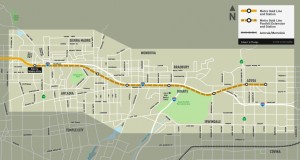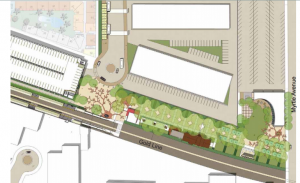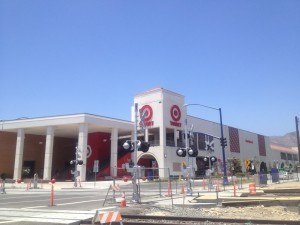 The political bargaining to make LA’s rail system happen meant that transit leaders had to greenlight some lame rail lines. How else can you get to 2/3 support for a county sales tax measure if you don’t throw a bone to every region? The poster child is the Gold Line, first to Pasadena and now extending into the suburban San Gabriel Valley at Azusa (Everything from “A” to “Z” in the “USA”) (map to the left).
The political bargaining to make LA’s rail system happen meant that transit leaders had to greenlight some lame rail lines. How else can you get to 2/3 support for a county sales tax measure if you don’t throw a bone to every region? The poster child is the Gold Line, first to Pasadena and now extending into the suburban San Gabriel Valley at Azusa (Everything from “A” to “Z” in the “USA”) (map to the left).
As I document in my book Railtown, the line got approval over more densely populated and higher transit-reliant parts of LA due to political support from Republican Rep. David Dreier and a host of state and local pols from the Pasadena area. Dreier was the rare Republican in favor of rail, because he wanted the line to eventually serve his San Gabriel Valley constituents. The hope among Gold Line boosters is to extend it out to the under-utilized Ontario Airport.
Streetsblog LA recently took a tour of the station areas along the new extension. The photos they took, as well as the renderings of planned development, show why this line is so unfortunate. There’s very little hope in the near future that any kind of density will happen around the stations, which is what is required to maximize ridership and get both a social and economic return on the expensive investment in rail.
Some lowlights (with photos):
- A Monrovia Square development that essentially looks like a giant parking lot with a building in the middle;
- A low-rise, sprawling retail center in Azusa, featuring a giant Target store.
Nowhere to be found are the kind of exciting new neighborhood plans or development, with clusters of 5-6 story residential and office buildings, necessary for light rail station areas. In fact, they would probably seem out of place in the low-rise suburbs there anyway, further underscoring why this line was a bad idea compared to other transit corridors in urban LA. In retrospect, a bus rapid transit line would have made more sense for this corridor. But at the very least, local leaders should show more ambition for development around the stations, now that we have the line.
Leave a Reply
You must be logged in to post a comment.




